11
junioYou'll Never Be Able To Figure Out This Autonomous Vacuum's Secrets

Exploring the Future of Home Cleaning: Autonomous Vacuum Robots
In the ever-evolving landscape of home innovation, autonomous vacuum robots have become a game-changer for contemporary households. These smart gadgets are not just a high-end; they are becoming increasingly vital for busy families and individuals who value tidiness and effectiveness. This post looks into the functionalities, benefits, and advancements of autonomous vacuum robots, providing an extensive guide for anybody thinking about including one to their home.
What Are Autonomous Vacuum Robots?
Autonomous vacuum robots, typically referred to as robotic vacuums or robovacs, are smart cleaning devices that run without human intervention. Equipped with sophisticated sensing units, mapping innovation, and AI algorithms, these robotics can navigate through a home, determine and tidy dirt and particles, and go back to their charging dock when the battery is low. They are designed to preserve a constant level of tidiness in various environments, including wood floorings, carpets, and tiles.
Secret Features and Technologies
Mapping and Navigation
- Laser Mapping (LIDAR): Many high-end robovacs utilize LIDAR technology to produce an in-depth map of the home. This enables the robot to browse effectively, avoiding challenges and covering every inch of the floor.
- Visual Simultaneous Localization and Mapping (vSLAM): Similar to LIDAR, vSLAM utilizes cams and image processing to map and navigate the home. This technology is often more budget-friendly and similarly effective in numerous scenarios.
Sensing Units and Obstacle Avoidance
- Bump Sensors: These sensing units spot when the robot has run into an item, enabling it to alter direction to avoid further accidents.
- Cliff Sensors: These sensors prevent the robot from falling off stairs or other elevated surfaces by finding sharp drops.
- Dust Detection: Some designs are equipped with sensing units that can find dirt and debris, enabling the robot to focus on areas that require more cleaning.
Cleaning Performance
- Brush Systems: Robovacs come with various brush configurations, consisting of side brushes and primary brushes, to effectively tidy different surfaces.
- Suction Power: The suction power of a robovac is important for its cleaning effectiveness. Greater suction power is usually needed for carpets and pet hair.
- Filter Systems: Most models have HEPA filters to trap fine particles and improve indoor air quality.
Connection and Control
- Wi-Fi Integration: Many robovacs can be controlled through a mobile phone app, permitting users to set up cleanings, display progress, and get notifies.
- Voice Assistants: Compatibility with voice assistants like Amazon Alexa and Google Assistant adds another layer of benefit, allowing users to begin or stop cleaning with basic voice commands.
Advantages of Autonomous Vacuum Robots
Convenience
- Autonomous vacuums can be arranged to clean at particular times, ensuring a consistently tidy home without manual effort.
- Users can manage the robot remotely, making it simple to begin a cleaning session from anywhere.
Performance
- These robots can clean up locations that are tough to reach or ignored, such as under furniture and in corners.
- They utilize smart algorithms to enhance cleaning courses, lowering the time and energy required for comprehensive cleaning.
Energy and Cost Savings
- Routine cleaning can help extend the life of carpets and floors, potentially conserving money on replacements.
- Lots of robovacs are energy-efficient, using less power compared to standard vacuum.
Health Benefits
- Reliable cleaning can minimize dust, allergens, and bacteria, enhancing indoor air quality and developing a healthier living environment.
- HEPA filters can record fine particles that are frequently missed out on by traditional cleaning techniques.
Developments and Future Trends
Synthetic Intelligence and Machine Learning
- AI and artificial intelligence are being incorporated into robovacs to enhance their decision-making and flexibility. For example, some models can learn the layout of a home in time and adjust their cleaning patterns accordingly.
Multi-Floor Cleaning
- Advanced designs can navigate between multiple floors, making them suitable for larger homes and apartment or condos.
Self-Emptying Systems
- Some high-end robovacs featured self-emptying dustbins, which can hold up to several weeks' worth of dirt before requiring to be emptied.
Improved Battery Life
- Battery technology is continuously advancing, causing longer operational times and quicker charging cycles.
Combination with Smart Home Systems
- Robovacs are increasingly being integrated with smart home systems, permitting seamless control together with other devices like smart lights and thermostats.
FAQs About Autonomous Vacuum Robots
Q: Are autonomous vacuum robots appropriate for homes with pets?
- A: Yes, many robovacs are created to handle pet hair and dander. Models with strong suction power and specialized brush systems are particularly effective for pet owners.
Q: How typically should I clean my robovac?
- A: It is advised to clean the brushes, filters, and dustbin after each use to guarantee optimum efficiency. In addition, regular deep cleaning of the robot's parts can help preserve its effectiveness.
Q: Can robovacs tidy stairs?
- A: Most robovacs are created to clean flat surfaces and will avoid stairs due to cliff sensors. Nevertheless, some models are capable of navigating single actions and even whole staircases, though this is less common.
Q: Are robovacs loud?
- A: Most robovacs are designed to operate silently, but the sound level can differ depending upon the design and suction power. Some models use a "quiet mode" for very little disruption.
Q: Can robovacs replace a traditional vacuum cleaner?
- A: While robovacs are outstanding for preserving daily cleanliness, they might not be as effective as traditional vacuum cleaners for deep cleaning or managing large amounts of dirt and particles. However, they can substantially reduce the frequency of manual cleaning.
Tips for Choosing the Right Autonomous Vacuum Robot
Consider the Size of Your Home
- Choose a design that can efficiently clean the square footage of your home. Some robovacs are better suited for studio apartments, while others are developed for larger homes.
Assess the Terrain
- If your home has several floors or various types of flooring, search for a robovac that can handle these challenges. Designs with strong suction power and versatile brush systems are perfect for homes with carpets and pet hair.
Check Battery Life
- Make sure the robot has a battery life that is enough for cleaning your home in one go. Some designs have longer battery life and can go back to their charging dock to charge and resume cleaning.
Review Connectivity Options
- If you wish to manage the robot remotely or incorporate it with your smart home system, look for models with Wi-Fi and voice assistant compatibility.
Consider Additional Features
- Functions like self-emptying, irritant purification, and virtual boundaries can boost the user experience and efficiency of the robovac.
Upkeep and Troubleshooting
Regular Cleaning
- Clean the brushes, filters, and dustbin after each usage to avoid blocking and keep performance.
Look for Obstacles
- Make sure that the robot's course is totally free of barriers like small objects, cables, and furniture. This can assist prevent the robot from getting stuck or harmed.
Software Updates
- Keep the robot's software approximately date to benefit from the current functions and enhancements.
Common Issues and Solutions
- Robot Gets Stuck: Clear the area of challenges and look for any tangled cords or debris in the brushes.
- Low Battery: Ensure the robot is returning to its charging dock and that the dock is functioning correctly.
- Dirty Filters: Replace or clean up the filters as suggested by the manufacturer.
Autonomous vacuum robotics represent a substantial advancement in home cleaning technology. They offer benefit, effectiveness, and health benefits, making them a valuable addition to modern homes. As technology continues to evolve, these robots are becoming smarter, more powerful, and more integrated into our every day lives. Whether you are a hectic professional, a pet owner, or just somebody who values a clean and orderly home, an autonomous vacuum robot can assist you attain your cleaning objectives with very little effort.
By thinking about the crucial features, advantages, and upkeep requirements, you can select the right robovac for your needs and enjoy a cleaner, more comfy living area. The future of home cleaning is here, and it is smarter than ever.


Reseñas